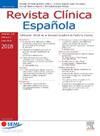Impacto del abandono del hábito de fumar sobre los parámetros metabólicos y la función renal en pacientes con y sin diabetes mellitus
IF 1.7
4区 医学
Q2 MEDICINE, GENERAL & INTERNAL
引用次数: 0
Abstract
Backgroud and objectives
As patients with diabetes are at a significantly higher risk of cardiovascular diseases than those without diabetes, it is important to gain a clinical understanding of the differential effects of smoking cessation on several risk factors between patients with and without diabetes.
Materials and methods
Patients who participated in a smoking cessation program received an assessment of the outcomes of interest. The outcomes were changes in metabolic parameters and renal function from baseline to 6-month follow-up after the smoking cessation program.
Result
A total of 1,954 patients joined the smoking cessation program, and 1,381 patients were in the smoking cessation failure (SCF) group and 573 were in the smoking cessation success (SCS) group. The decrease in HbA1c after smoking cessation was only observed in patients with diabetes. Smoking cessation was also associated with a significant decrease in LDL cholesterol in patients with diabetes. In terms of renal function, smoking cessation was associated with an improvement in eGFR, and the trend was similar in patients with and without diabetes.
Conclusion
Successful smoking cessation was associated with improvement in renal function. Moreover, it was associated with improvements in HbA1c and LDL cholesterol in patients with diabetes, despite significant weight gain.
戒烟对糖尿病患者和非糖尿病患者代谢参数和肾功能的影响
背景与目的由于糖尿病患者患心血管疾病的风险明显高于非糖尿病患者,因此了解戒烟对糖尿病患者和非糖尿病患者的几种危险因素的不同影响是非常重要的。材料和方法参与戒烟计划的患者接受了对其感兴趣的结果的评估。结果是代谢参数和肾功能从基线到戒烟计划后6个月随访的变化。结果共有1954例患者加入戒烟计划,戒烟失败(SCF)组1381例,戒烟成功(SCS)组573例。仅在糖尿病患者中观察到戒烟后HbA1c的降低。戒烟也与糖尿病患者低密度脂蛋白胆固醇的显著降低有关。在肾功能方面,戒烟与eGFR的改善相关,并且在糖尿病患者和非糖尿病患者中趋势相似。结论成功戒烟与肾功能改善相关。此外,它与糖尿病患者HbA1c和LDL胆固醇的改善有关,尽管体重明显增加。
本文章由计算机程序翻译,如有差异,请以英文原文为准。
求助全文
约1分钟内获得全文
求助全文
来源期刊

Revista clinica espanola
医学-医学:内科
CiteScore
4.40
自引率
6.90%
发文量
73
审稿时长
28 days
期刊介绍:
Revista Clínica Española published its first issue in 1940 and is the body of expression of the Spanish Society of Internal Medicine (SEMI).
The journal fully endorses the goals of updating knowledge and facilitating the acquisition of key developments in internal medicine applied to clinical practice. Revista Clínica Española is subject to a thorough double blind review of the received articles written in Spanish or English. Nine issues are published each year, including mostly originals, reviews and consensus documents.
 求助内容:
求助内容: 应助结果提醒方式:
应助结果提醒方式:


